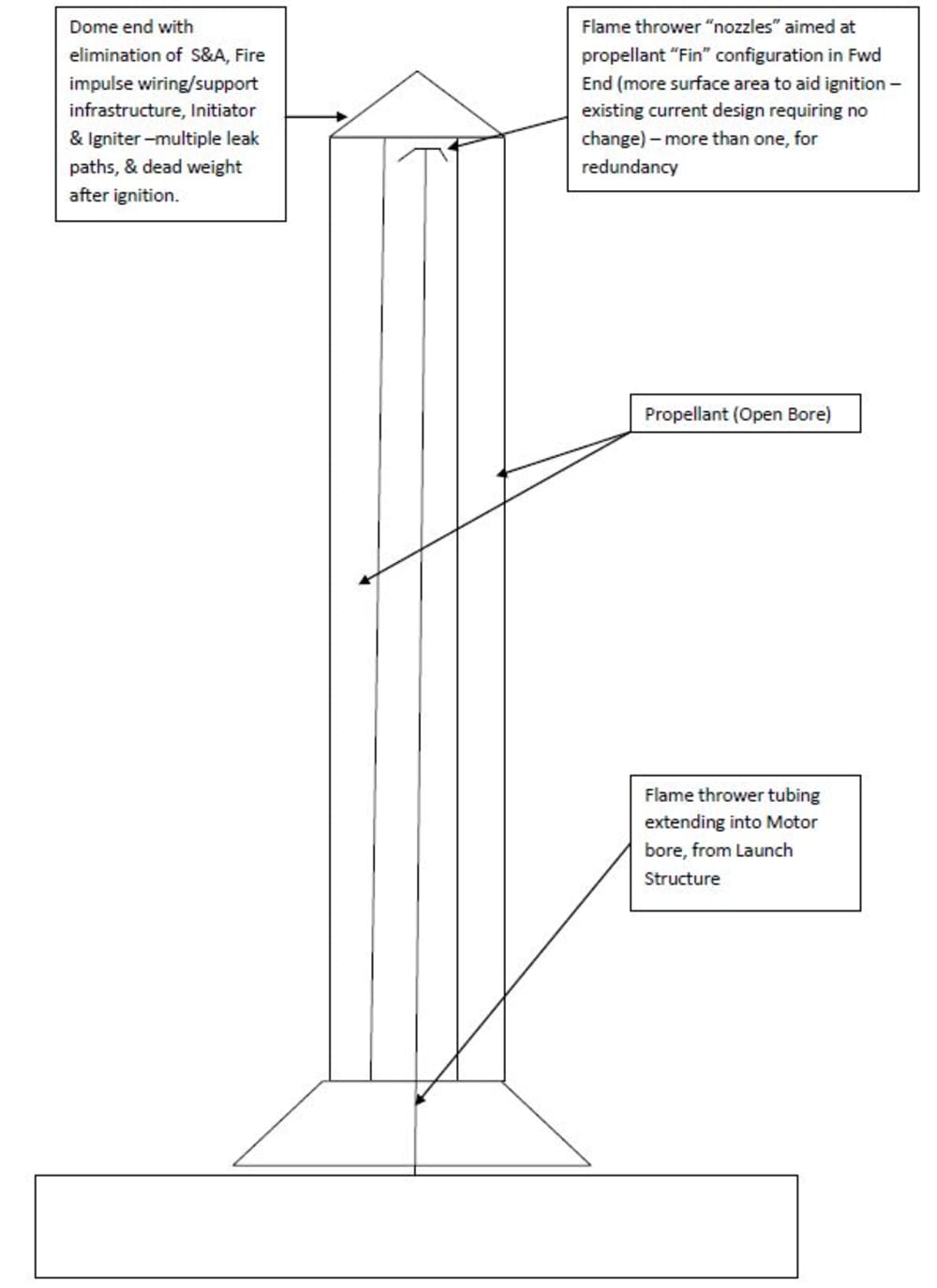Rockets utilized by NASA, etc. utilize an antiquated ignitiion system, requiring a chain of events to occur to obtain ignition. (Safe-and-Arm device to rotate to "arm," electric impulse given, ignites propellant pellets, which ignite initiator propellant grain, which ignites the igniter propellant grain, which ignites the motor propellant grain. Example is of current solid motors used by NASA.).
This method of ignition requires multiple joints that have to be sealed, and involves many complex parts/pieces. After less than .5 seconds, this hardware has "done its job" and is now dead weight, having to be carried throughout the launch, serving no further useful purpose (useless payload).
Solution: Design a redundant "flame thrower" that could be a part of the launch pad, with tubing passing up the bore of the motor, then inverting at the head end, with a flame dispersion nozzle that would direct flame onto the propellant grain/fins of the Fwd Segment. Upon ignition, the tubing associated with this would be "consumed" or retracted (melted - could be aluminum tubing).
- No "dead weight" having to be carried/dealt with.
- Elimination of multiple leak paths/failure modes (most failure modes revolve around the complicated ignition system as it now exists - a throwback from the Apollo days and beyond).
- Costs would be reduced dramatically.
- A new flame thrower tubing arrangement could be configured for each launch.
- The flame thrower arrangement could consist of 2 or 3, so redundancy exists, in the event one didn't ignite as planned.
(Sketch is primitive, but conveys the concept.)
Like this entry?
-
About the Entrant
- Name:Max Moore
- Type of entry:individual
- Patent status:none

